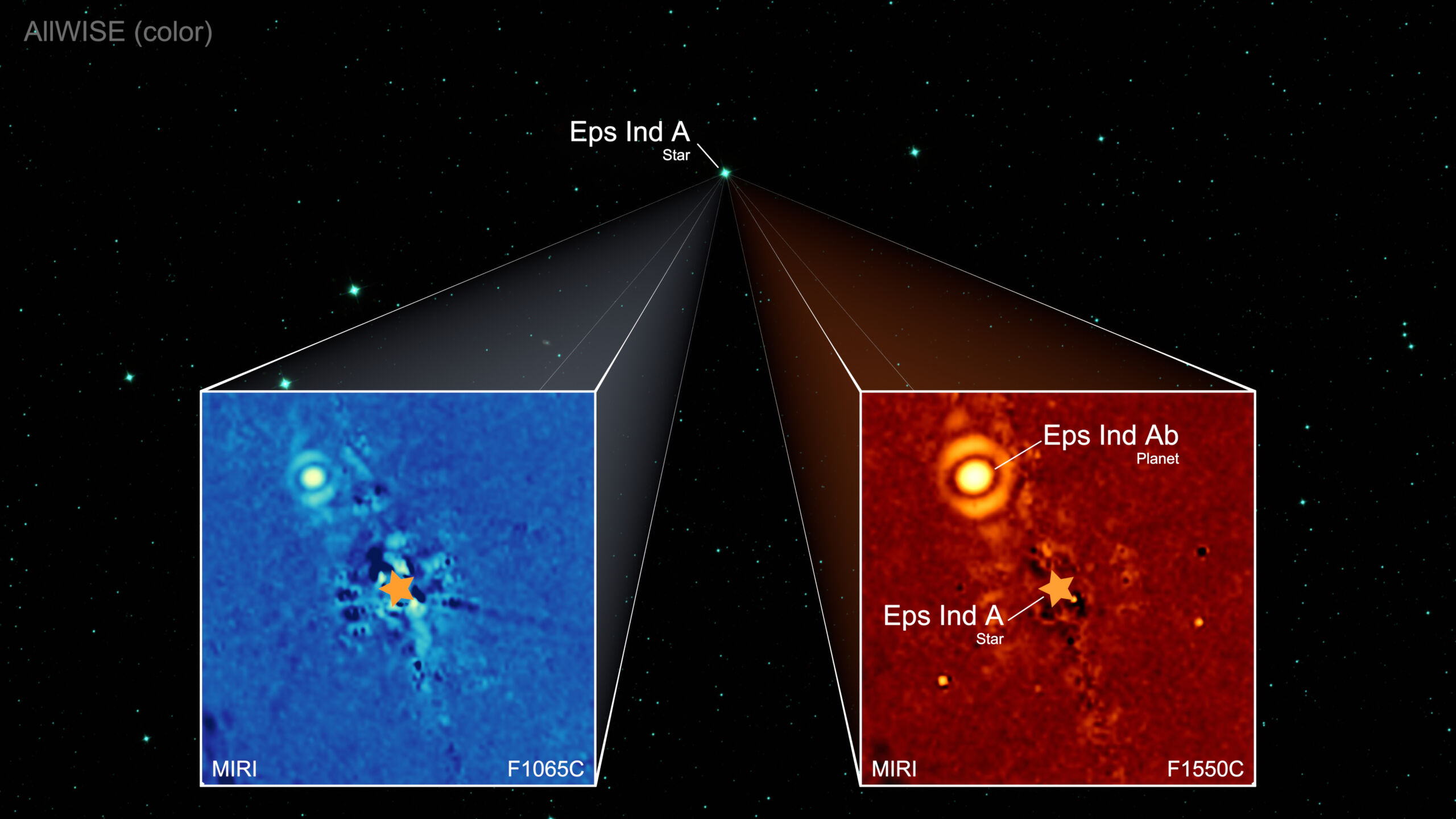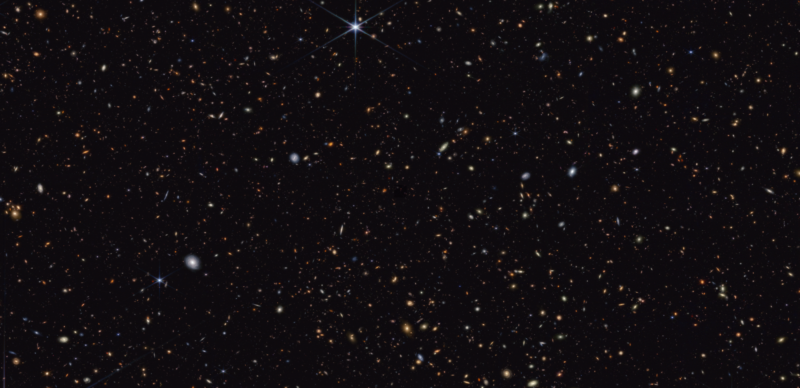
We have a couple of techniques that allow us to infer the presence of an exoplanet based on its effects on the light coming from its host star. But there's an alternative approach that sometimes works: image them directly. It's much more limited, since the planet has to be pretty big and orbiting far away enough from its star to avoid having light coming from the planet swamped by the far more intense starlight.
Still, it has been done. Massive exoplanets have been captured relatively shortly after their formation, when the heat generated by the collapse of material into the planet causes them to glow in the infrared. But the Webb telescope is far more sensitive than any infrared observatory we've ever built, and it has managed to image a relatively nearby exoplanet that's roughly as old as the ones in our Solar System.
Looking directly at a planet
What do you need to directly image a planet that's orbiting a star light-years away? The first thing is a bit of hardware called a coronagraph attached to your telescope. This is responsible for blocking the light from the star the planet is orbiting; without it, that light will swamp any other sources in the exosolar system. Even with a good coronagraph, you need the planets to be orbiting at a significant distance from the star so that they're cleanly separated from the signal being blocked by the coronagraph.
Then, you need the planet to emit a fair bit of light. While the right surface composition might allow the planet to be highly reflective, that's not going to be a great option considering the distances we'd need the planet to be orbiting to be visible at all. Instead, the planets we've spotted so far have been young and still heated by the processes that brought material together to form a planet in the first place. Being really big doesn't hurt matters, either.
Put that all together, and what you expect to be able to spot is a very young, very distant planet that's massive enough to fall into the super-Jupiter category.
But the launch of the Webb Space Telescope has given us new capabilities in the infrared range, and a large international team of researchers pointed it at a star called Epsilon Indi A. It's a bit less than a dozen light-years away (which is extremely close in astronomical terms), and the star is both similar in size and age to the Sun, making it an interesting target for observations. Perhaps most significantly, previous data had suggested a large exoplanet would be found, based on indications that the star was apparently shifting as the exoplanet tugged on it during its orbit.
And there was, in fact, an indication of a planet there. It just didn't look much like the expected planet. "It’s about twice as massive, a little farther from its star, and has a different orbit than we expected," said Elisabeth Matthews, one of the researchers involved.
At the moment, there's no explanation for the discrepancy. The odds of it being an unrelated background object are extremely small. And a reanalysis of data on the motion of Epsilon Indi A suggests that this is likely to be the only large planet in the system—there could be additional planets, but they'd be much smaller. So, the researchers named the planet Epsilon Indi Ab, even though that was the same name given to the planet that doesn't seem to match this one's properties.
Big, cold, and a bit enigmatic
The revised Epsilon Indi Ab is a large planet, estimated at roughly six times the mass of Jupiter. It's also orbiting at roughly the same distance as Neptune. It's generally bright across the mid-infrared, consistent with a planet that's roughly 275 Kelvin—not too far off from room temperature. That's also close to what we would estimate for its temperature simply based on the age of the planet. That makes it the coolest exoplanet ever directly imaged.
While the signal from the planet was quite bright at a number of wavelengths, the planet couldn't even be detected in one area of the spectrum (3.5 to 5 micrometers, for the curious). That's considered an indication that the planet has high levels of elements heavier than helium, and a high ratio of carbon to oxygen. The gap in the spectrum may influence estimates of the planet's age, so further observations will probably need to be conducted to clarify why there are no emissions at these wavelengths.
The researchers also suggest that imaging more of these cool exoplanets should be a priority, given that we should be cautious about extrapolating anything from a single example. So, in that sense, this first exoplanet imaging provides an important confirmation that, with Webb and its coronagraph, we've now got the tools we need to do so, and they work very well.
Nature, 2024. DOI: 10.1038/s41586-024-07837-8 (About DOIs).



3175x175(CURRENT).thumb.jpg.b05acc060982b36f5891ba728e6d953c.jpg)
Recommended Comments
There are no comments to display.
Join the conversation
You can post now and register later. If you have an account, sign in now to post with your account.
Note: Your post will require moderator approval before it will be visible.